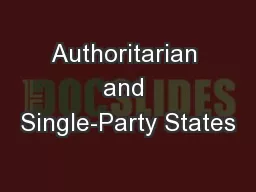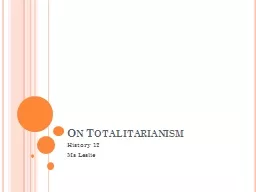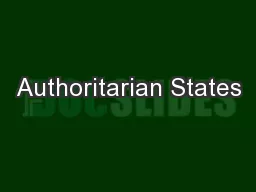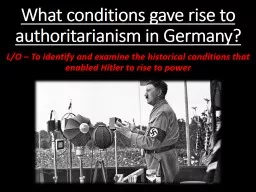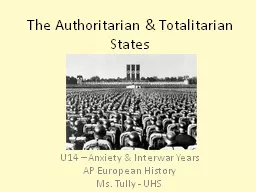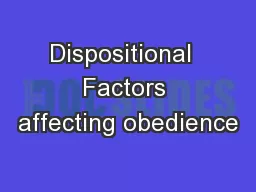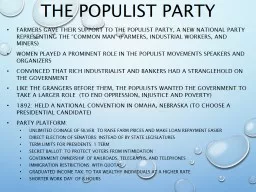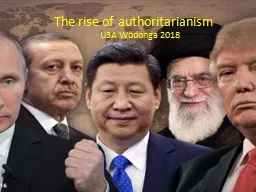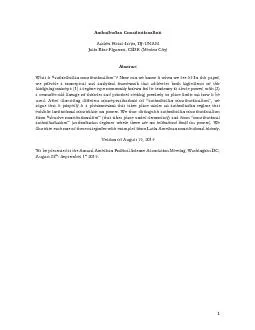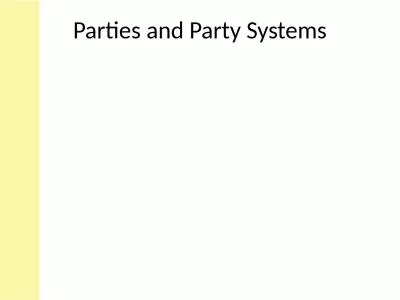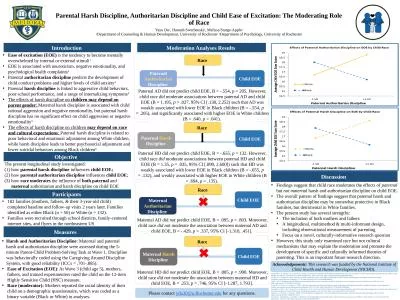PPT-Authoritarian and Single-Party States
Author : olivia-moreira | Published Date : 2017-06-06
Stalin and Russia Hitler and Nazi Germany Mao and China Castro and Cuba Communism Marxism Karl Marx and Engels History of class struggles Classless society based
Presentation Embed Code
Download Presentation
Download Presentation The PPT/PDF document "Authoritarian and Single-Party States" is the property of its rightful owner. Permission is granted to download and print the materials on this website for personal, non-commercial use only, and to display it on your personal computer provided you do not modify the materials and that you retain all copyright notices contained in the materials. By downloading content from our website, you accept the terms of this agreement.
Authoritarian and Single-Party States: Transcript
Download Rules Of Document
"Authoritarian and Single-Party States"The content belongs to its owner. You may download and print it for personal use, without modification, and keep all copyright notices. By downloading, you agree to these terms.
Related Documents

